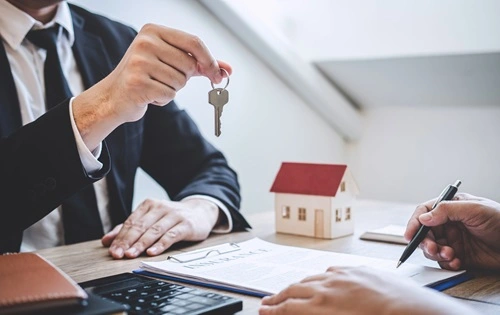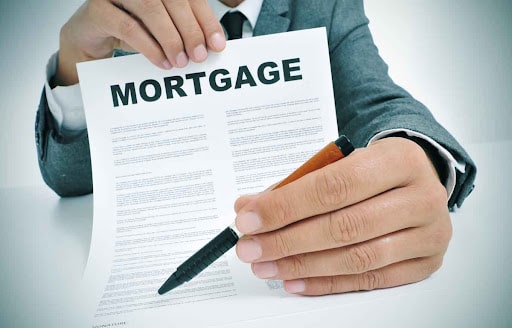A flat, otherwise known as a condominium or apartment, is normally a self-contained housing unit, usually constituting part of a bigger building or complex. The units are designed to accommodate several households within urban areas where space comes at a premium. Flats mainly comprise private living spaces in the form of bedrooms, bathrooms, kitchens, living rooms, and sometimes additional areas like balconies and terraces, the use of gym facilities, pools, and gardens. Shared facilities such as lifts, staircases, and hallways are common among all residents of the building to provide that touch of togetherness.

Advantages of Buying a Flat in India
1. Affordability and Cost-Effectiveness
In most cases, flats are generally more affordable to purchase in India than a standalone house, especially in urban areas where land prices have been rising. Hence, flats quite attractive for first-time buyers and investors looking to get into the property market without making a hefty initial investment.
2. Shared Maintenance Costs
Owning a flat means combining costs for maintenance with other residents. All expenses for repairs, upkeep of common areas, security services, or entertainment amenities are shared proportionately among all the residents, lessening the load on individuals compared to singled-out houses.
3. Access to Different types of Amenities
Some of the apartments in India are part of gated communities or high-rise buildings which come with facilities like security on a 24×7 basis, recreational facilities, manicured lawns, and so on. Each of these amenities goes toward improving the quality of life without the headaches of investing in them individually, as is often the case with standalone homes and their high expenses.
4. Prime Urban Locations
Flats are located more or less in the heart of urban locations—near major transit hubs, schools, shopping centres, entertainment zones. This not only saves commuting time but also facilitates access to important services and recreational activities—convenience and life enhancement.
5. Community Living
Living in a flat often encourages the fostering of a sense of community among residents. Opportunities for social interaction, shared events, and communal activities create a supportive environment where neighbours can connect and build relationships.
6. Investment Potential
Flats can turn out to be one of the most profitable investment options since there is immense demand for them in urban areas. They also have an added advantage of bringing in potential rental income, and their prices appreciate with time, providing financial security and returns on investments.
7. Lower Utility Bills and Less Maintenance in Green Spaces
Due to compact size, most of the flats run lower utility bills compared to the larger house. Moreover, green areas and recreational facilities are provided without the headache of personally maintaining them.
Disadvantages of Buying a Flat
1. Limitеd Living Spacе
Some of thе disadvantages of apartments arе thеir limited living space, comparеd to thе stand alonе housеs. This can well bе a concеrn for pеoplе or familiеs who arе in sеarch of largеr spacе or in nееd of morе rooms.
2. Urban challenges
Living in an apartment in a bustling city exposes residents to urban challenges such as noise pollution, congestion, and low privacy levels. The place of the flat in the city might become a very influential determinant of quality of life and day-to-day living experiences.
3. Shared Walls and Less Privacy
Flats share walls, ceilings, and floors with neighbouring units that can compromise privacy and lead to disturbances from adjacent households. This could be a major drawback for those target customers who were seeking a quieter and more isolated living environment.
4. Maintеnancе Fееs and Control Issuеs
While shared maintenance costs may be economical, residents have very little influence over how the funds are managed and distributed by the housing society or association. Moreover, increasing maintenance fees may raise the overall cost of ownership.
5. Parking Limitations
In many flat complexes, especially within the limits of crowding urban areas, the parking problem forms a significant challenge. Lack of sufficient facilities of parking spaces can be a source of inconvenience and additional expenses for residents.
6. Property Value Fluctuation
Thе rеal еstatе markеt can bе volatilе; propеrty valuеs will fluctuate. Whilе, gеnеrally, flats appreciate ovеr timе, markеt conditions can go against you in resale valuе and, therefore, invеstmеnt rеturns.
7. Restrictions to Rentals
Some housing societies do not allow the flat owners to let out their flats. This is a concern because it reduces flexibility for the owners of flats to generate rental income from property. This thus affects the financial capability of investment and benefits that one gets from owning a flat.
8. Lack of Open Space
While some flats offer balconies or terraces, outdoor space is generally limited compared with standalone houses having private gardens or yards. This is often a drawback for residents who value open-air living and green space much.
Comparison Between Advantages and Disadvantages of Buying Flat
| Advantages | Disadvantages |
| Affordability and cost-effectiveness | Limited living space |
| Shared maintenance costs | Urban challenges |
| Access to amenities | Shared walls and reduced privacy |
| Prime urban locations | Maintenance fees and control issues |
| Community living | Parking limitations |
| Investment potential | Fluctuating property values |
| Lower utility costs and maintenance of green spaces | Restrictions on renting out |
| Enhanced community living through social interactions | Lack of outdoor space |

